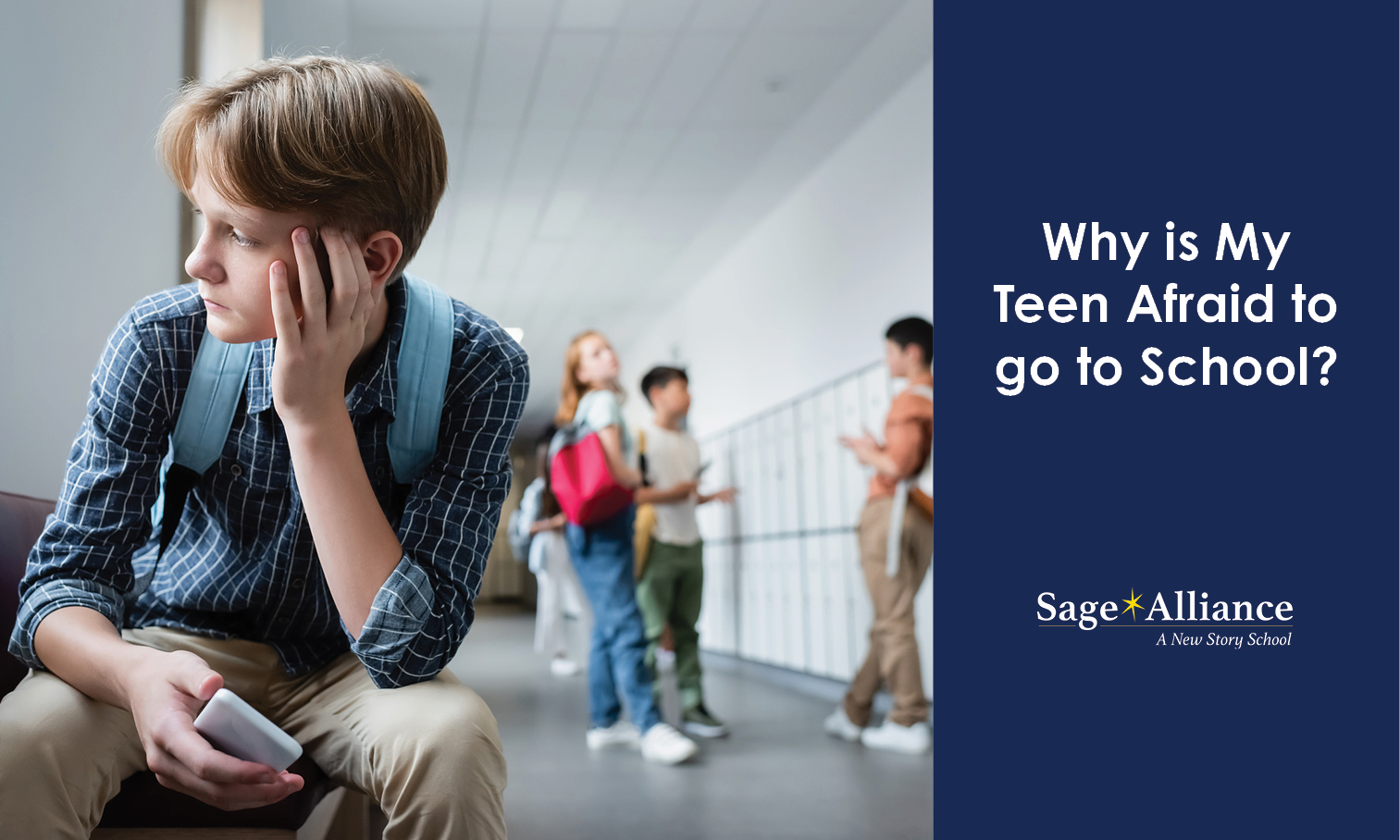Why is My Teen Afraid to go to School?
Posted: February 17, 2015 | Written By: Justin Gerwick | Category: School Avoidance

School avoidance in children and adolescents is a growing issue that impacts not only the student but the entire family, school personnel and mental health professionals working with the student. Although school avoidance may appear to be a very simple or concrete issue to resolve, it is often misunderstood and consequently minimized or mistreated. Without proper intervention, the student’s attendance further deteriorates, his/her anxiety further increases and this cycle is perpetuated.
Ultimately, the school avoidance is exacerbated over time and can result in clinical depression. Most school avoidance issues stem from strong feelings related to the process of separation/individuation. Frequently, the school avoidant child has anxiety about separating from his parent(s) and is intensely worried about peer/social relationships at school. In other cases, the child is afraid to separate from the parents due to concerns about the parents’ own feelings about separation. Unfortunately, the feelings that lead to school avoidance are very often not identified, discussed or understood by either the child or the parents.
These can be overt feelings of anxiety or other underlying feelings such as abandonment, disappointment, guilt, worry, shame, embarrassment, etc. These unexpressed and unaddressed feelings become key precursors to school avoidance. Although it is difficult to recognize feelings that have not been expressed, there are early (and often subtle) indicators prior to the onset of significant school avoidance that parents and school personnel are advised to address before the situation intensifies.
The following are some of the common signs of a child’s increasing anxiety that lead to school avoidance:
-
Increasing/excessive tardiness
-
Monday and post-holiday absences
-
Increase of vague somatic complaints in the morning
-
Unspecified illnesses or sickness in the morning
-
Unsubstantiated complaints about peers and teachers
-
Crying and/or tantrums when topic of school is brought up
-
Irrational excuses by the child about why he/she cannot go to school on a particular day (such as, “I’m already late and can’t walk in during the middle of a class”)
-
Fantasy-like communication by the child related to his/her absenteeism (such as repeatedly promising to go to school tomorrow and then not going).
It is essential to recognize these signs at an early stage rather than assume that the child will just start feeling better and initiate his or her return to school. The reality is that the child’s emotional state will not improve when he/she is at home and not receiving treatment to deal with feelings related to separation/individuation. It must be emphasized that, while the child may indicate that he/she is feeling better during a school day spent at home, these feelings are very temporary. They provide relief for the child in the moment.
The underlying feelings will continue to resurface the next morning when the anxiety returns about separating and going to school for the day. Treatment professionals need to help the child’s parents take charge, provide firm expectations and make decisions, rather than allow the child to dictate the appropriate course of action. Although parents often worry that pushing the child to do something he/she doesn’t want to do will only make the situation worse, the current situation will only continue to deteriorate in the absence of intervention and a clear message.
Treatment professionals may also need to address underlying parental ambivalence about their child going to school against his/her own will. This ambivalence needs to be brought into consciousness, understood and worked through by the parents in order to diminish the likelihood of unconsciously sabotaging the student’s return to school. It is essential that the parents realize this and make staying home less comfortable for the child if he/she resists going to school (for example, by withholding Internet, phone and TV or other privileges, and/or by involving a truancy officer.) Early detection and intervention by professionals may allow the school avoidant student to remain in his or her district school. Treatment should be implemented at an appropriate level of care (school counseling, CST worker, outpatient therapy, partial hospitalization, inpatient hospitalization, etc.)
Additionally, individuals who have meaningful relationships with the child should be considered as resources in helping to remedy this situation. When school avoidance becomes entrenched, placement in a therapeutic milieu may be indicated. At Sage Alliance, we address school avoidance through ongoing intensive collaboration between students, parents, therapists, teachers and administrators.
Sage Alliance professionals work closely with student and parents and consistently reinforce the idea that the treatment team can most effectively handle the fallout of the child’s emotions when the child comes to school. Overall, it is important not to minimize school avoidance by attributing it to the child being a so-called “bad kid” or simply oppositional, defiant, confrontational or angry. Children who are susceptible to school avoidance may very well be angry, but they are often also sad and anxious.
As mentioned above, the key is that the school avoidance is an expression of the student’s unspoken feelings. If the student does not receive the support that enables his/her expression of these feelings, school avoidance can become increasingly entrenched and the resulting social isolation and education gaps increasingly problematic. Ultimately, if the issue of school avoidance is to be resolved once and for all, it takes a concerted effort from parents, school personnel and mental health professionals.
Want to be notified of new articles and resources from Sage Alliance? Click here to submit your email and opt into our newsletter.









